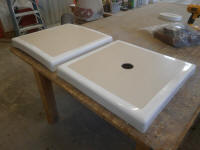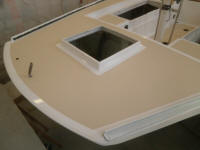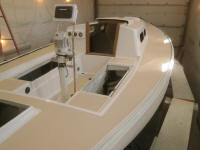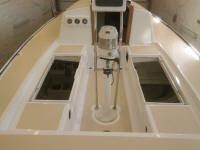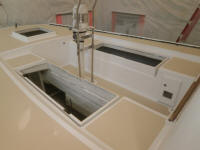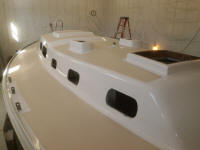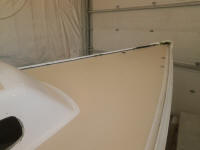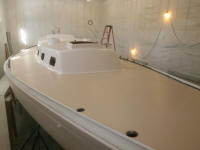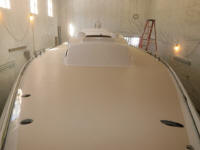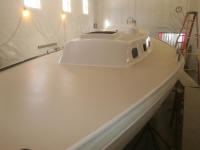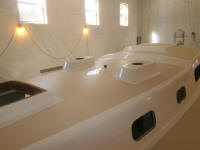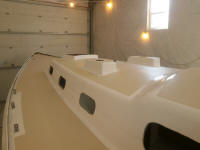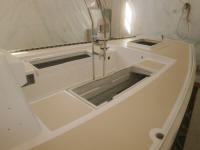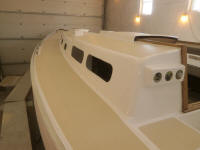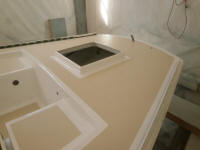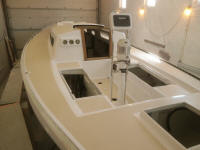
110 Cookson Lane | Whitefield, ME 04353 | 207-232-7600 | tim@lackeysailing.com
Ashantee | Thursday, March 12, 2015
Early in the morning, I applied the second coat of nonskid paint to the decks. By late in the day, the paint had cured enough to remove the masking tape, which I did from the staging as much as possible.
Wanting to remove all the tape for pictures, I had to get aboard to access some areas. Fleet of foot and catlike in my grace, I sashayed from the ladder to spots of gloss paint about the cockpit, staying off the new nonskid paint to get first into one of the cockpit lockers, from which I could reach the cockpit sole, then into the companionway, from which I could remove the sea hood tape, and finally through the forward hatch to get the tape on the coachroof.
During the remainder of the day, I continued work on the old hardware, removing silicone from chainplate covers and the last other bits of remaining hardware before moving on to the four deadlight frames. Each of the four sets looked pretty much the same as the one shown in the photo series below.
In each instance, I began by removing the screws (which I'd reinstalled during initial removal to keep the screws registered in the correct holes), and taping them to some paper to keep them in the proper orientation for reinstallation later. Through the process I also marked each frame for proper orientation (up and forward), since they wouldn't necessarily align properly in any other way.
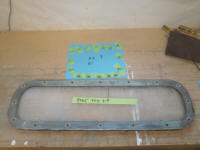
The frames were filled with a combination of silicone sealant, some sort of black weatherstripping, and a dense, oily, grayish-green mass of sticky old bedding compound similar to Dolfinite. The old plastic lenses were in poor condition and were to be replaced with new.

I scraped away the old sealant and, as needed, sloppy bits of old paint from the edges of the frames, avoiding as much as possible disturbing the fine patina of the old bronze on the exposed sides of the two frames. The cast channels and screw pockets on the inside frame made this a time-consuming chore; the outer frames were flat, so scraping them was much faster. As needed, I used a wire brush and solvent to clean up the bonding surfaces of the frames for reinstallation. I also scraped away the sealant from the old lenses so I could use them as patterns for the new ones later.
I repeated the process for each of the four sets, which took up most of the day's time. Fortunately, I ran out of frames just before I ran out of tolerance for the tedious job, though ahead still lay the six opening ports that I'd have to similarly prepare in the coming days.
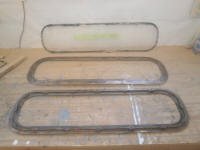


Total Time Billed on This Job Today: 7
Hours
